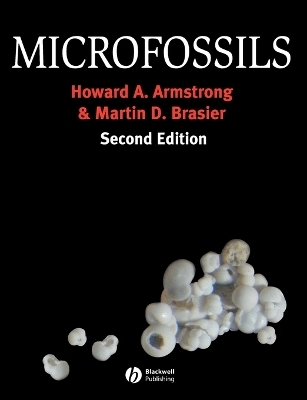
Microfossils
Wiley-Blackwell (Verlag)
978-0-632-05279-0 (ISBN)
This is a new and completely rewritten edition of the well-known text Microfossils (first published in 1980) covering all the major microfossil groups, with information on taxonomy, phylogeny, ecology and palaeoecology.
particular attention is given to the uses of microfossils in environmental reconstruction and biostratigraphy
numerous line and half-tone illustrations
emphasis on practical applications of micropalaeontology
only student-friendly micropaleontology text available
Howard Armstrong has been researching micropalaeontology for twenty years and has published extensively on applied micropalaeontology, numerical biostratigraphy, conodont palaeobiology and dispersal biogeography. His research currently focuses on environmental and biological patterns and processes associated with Palaeozoic glaciations. He is Senior Lecturer in Micropalaeontology at the University of Durham. Martin Brasier began research as a marine biologist aboard HMS Fox in 1970, mapping the microbial ecology of Caribbean reefs and algal mats. The author is well known for the first edition of Microfossils and for his work on early biosphere evolution, integrating microfossils, biogeochemistry and chemostratigraphy from the earliest signs of life in the Archaean through to the Cambrian explosion of multicellular forms. He maintains a special interest in the metabolism and evolution of bacterial and protist fossil groups, and has worked with NASA on the protocols for recognition of the earliest life on Earth and beyond. He is currently Professor of Palaeobiology at the University of Oxford.
Preface. Part 1 Applied micropalaeontology.
Chapter 1 Introduction.
Chapter 2 Micropalaeontology, evolution and biodiversity.
Chapter 3 Microfossils in Stratigraphy.
Chapter 4 Microfossils, stable isotopes and ocean-atmosphere history.
Chapter 5 Microfossils as thermal metamorphic indicators.
Part 2 The rise of the biosphere.
Chapter 6 The origin of life and the Archean biosphere.
Chapter 7 Emergence of eukaryotes to the Cambrian explosion.
Chapter 8 Bacterial ecosystems and microbial sediments.
Part 3 Organic walled microfossils.
Chapter 9 Acritarchs and prasinophytes.
Chapter 10 Dinoflagellates and Ebridians.
Chapter 11 Chitinozoa.
Chapter 12 Scolecodonts.
Chapter 13 Spores and pollen.
Part 4 Inorganic walled microfossils.
Chapter 14 Calcareous nannoplankton: Coccolithophores and Discoasters.
Chapter 15 Formainifera.
Chapter 16 Radiozoa (Acantharia, Phaeodaria and Radiolaria) and Heliozoa.
Chapter 17 Diatoms.
Chapter 18 Silicoflagellates and Chrysophytes.
Chapter 19 Ciliophora: Tintinnids and Calpionellids.
Chapter 20 Ostracods.
Chapter 21 Conodonts.
Systematic Index.
General Index.
| Erscheint lt. Verlag | 8.12.2004 |
|---|---|
| Verlagsort | Hoboken |
| Sprache | englisch |
| Maße | 191 x 249 mm |
| Gewicht | 671 g |
| Themenwelt | Naturwissenschaften ► Geowissenschaften ► Mineralogie / Paläontologie |
| ISBN-10 | 0-632-05279-1 / 0632052791 |
| ISBN-13 | 978-0-632-05279-0 / 9780632052790 |
| Zustand | Neuware |
| Haben Sie eine Frage zum Produkt? |
aus dem Bereich


